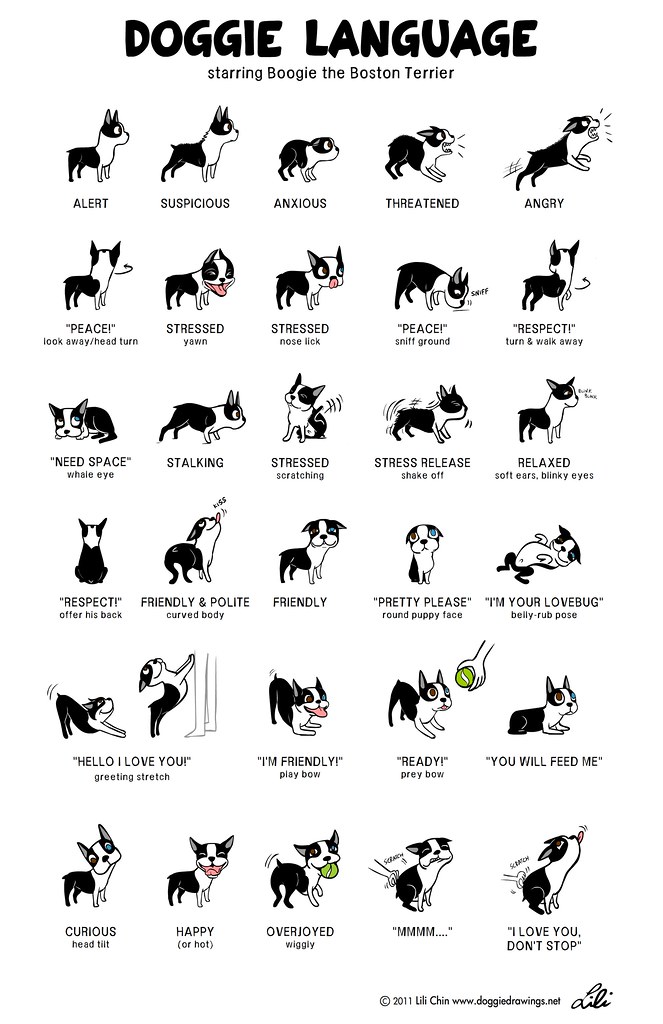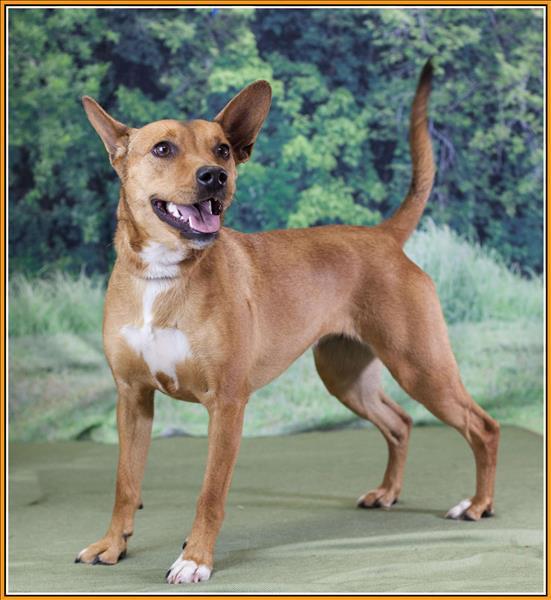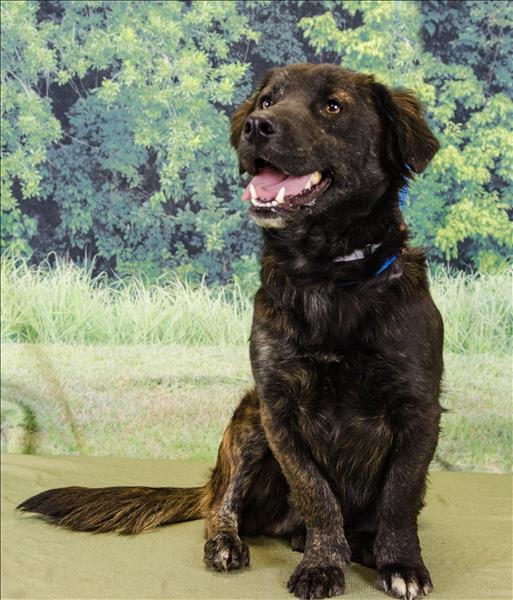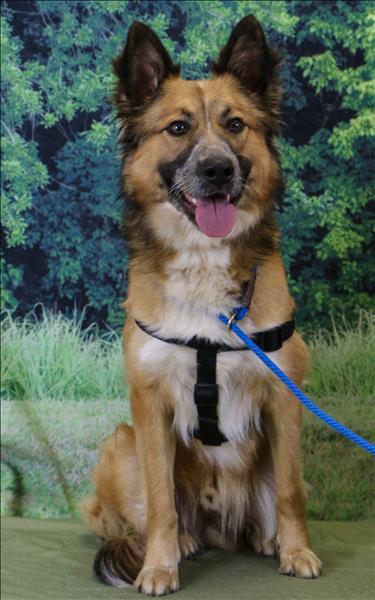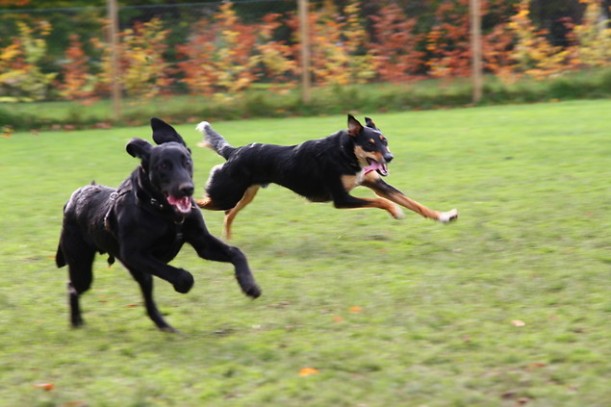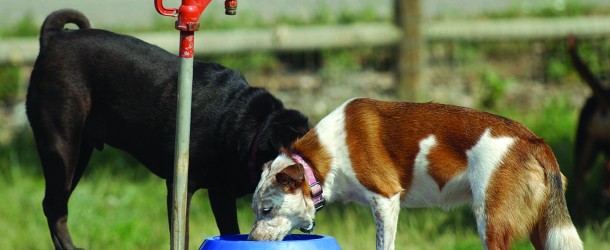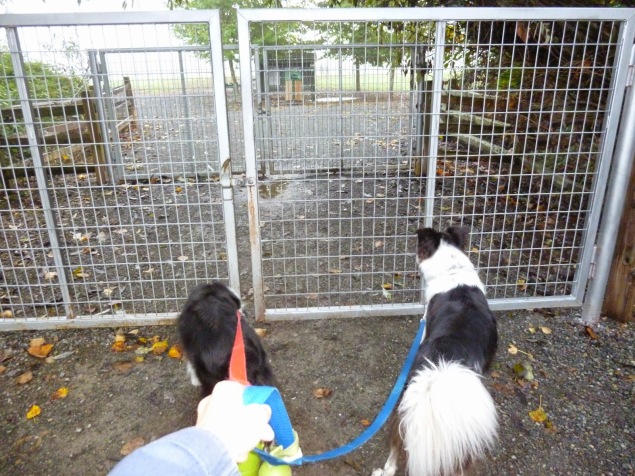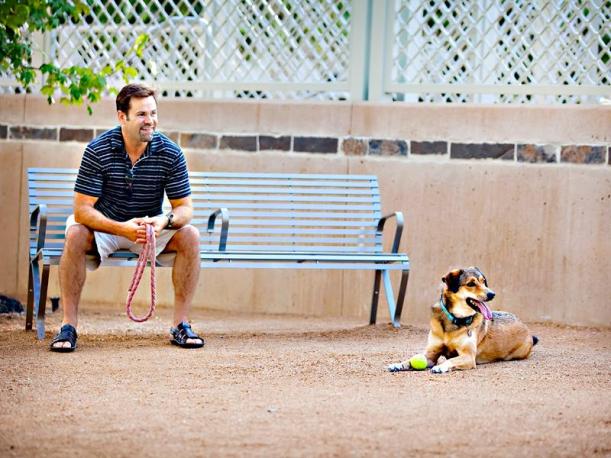A healthy and active lifestyle promotes not only our own quality of life, but that of our animal companions. With National Parks & Recreation Month underway in July, there is no time like the present to grab your dog and head out to your neighborhood parks.
Many parks in the Houston area offer separate or adjacent parks designed just for dogs, where they can run, jump, play and exercise. Check out these great options in your community, and make sure to observe safe practices to avoid heat stroke and other heat-related illnesses (link) while out this summer. And don’t forget, each dog park has their own rules for people and the animals they bring. For more information on dog park etiquette, check out our post on dog park manners: https://houstonspca.wordpress.com/2015/02/19/houston-spcas-dog-park-manners/
Houston
Alexander Deussen Dog Park
Harris County Precinct 1 opened the 5.25-acre Alexander Deussen Dog Park, 12303 Sonnier St., in Houston in July 2010 with separate areas for small and large dogs, plenty of shade, benches and drinking fountains for the entire family to enjoy. The park is fenced for your safety and security.
Congressman Bill Archer Bark Park
This summer, the dogs can have a blast while taking a splash at Congressman Bill Archer Bark Park, 3201 Hwy. 6, across from Bear Creek Park in West Houston. The Harris County Precinct 3 park boasts doggie swimming ponds, water fountains and plenty of shade to keep your animals cool. Open daily from dawn until dusk.
Danny Jackson Bark Park
Another Harris County Precinct 3 property, Danny Jackson Bark Park, 4700 Westpark, offers fun for you and man’s best friend inside the loop, and features separate areas for large and small dogs, each with their own pond, shade trees and a walking path.
Discovery Green Dog Runs
Two dog parks await you at the City of Houston’s lush green space downtown known as Discovery Green, 1500 McKinney. The Kinder Large Dog Run and Harriet and Joe Foster Small Dog Run offer your pets their own space for off-leash adventures in the middle of the city’s abundant people park. Crushed gravel ground cover, shade, fountains and seating areas help make an exciting experience for all members of the family.
Ervan Chew Dog Park
Ervan Chew Dog Park, 4502 Dunlavy, was the City of Houston’s first neighborhood park to allow dogs to legally run off leash and provides a fenced-in space of approximately 9,000 square feet from which dogs can exercise without restriction. The park features a small neighborhood park adjacent to the space for the kids, plus a water fountain, large shade trees and benches for the family.
Gene Green Dog Park
Gene Green Dog Park, 6500 E. Sam Houston Parkway, is one of the area’s larger dog parks, and features a pond and plenty of greenery to enjoy with the entire member of your family. A neighboring skate and splash park will have the kids enjoying some outdoor time too at this park operated by Harris County Precinct 2.
Johnny Steele Dog Park
Johnny Steele Dog Park, 2929 Allen Pkwy., sits adjacent to Buffalo Bayou on two beautiful acres near Allen Parkway and Montrose Blvd. The park features large and small dog ponds, large shade structures, water play features, a dog wash station, and drinking fountains for people and dogs. There is limited parking available alongside the Allen Parkway frontage road. The park is open from 7 a.m. to 8 p.m.
Levy Park
Looking for a small dog park inside the loop? Leave it to Levy Park’s dog park, 3801 Eastside, in Houston, which offers a little shade, ample parking, and a dog water fountain. The park is operated by the City of Houston.
Maxey Bark and Run Park
The approximately 13-acre Maxey Bark and Run Park, 601 Maxey Rd., features separate areas for small and large dogs, a dog shower area, waste disposal stations, and plenty of shade trees to enjoy with your favorite animals.
Millie Bush Bark Park
The 13-acre Harris County Precinct 3 park, 16756 Westheimer Parkway, named after the beloved pet English Springer Spaniel of President George H.W. and Barbara Bush features a double-gated and fenced area for small and large dogs, several swimming ponds, water fountains for people and dogs, and an abundance of shade trees.
Tanglewood Bark Park
Nestled at the corner of Bering and Woodway in Houston lies Tanglewood Bark Park, 5801 Woodway Dr., a small neighborhood park offering off-leash access for you and your dogs. Operated by the City of Houston.
TC Jester Bark Park
This City of Houston park in the city’s northwest side, 4201 TC Jester Blvd., offers separate small and large dog areas, double-gated entrances, a variety of drinking fountains for man and dog, and ample shade trees and benches to rest. Located behind the baseball fields at TC Jester swimming pool.
Tom Bass Regional Dog Park
Operated by Harris County Precinct 1, the Tom Bass Regional Dog Park is located at 3452 Fellows Rd.
West Webster Bark Park
Montrose’s pocket park, West Webster, 1501 W. Webster St., boasts a 5,000 square-foot dog park within that includes a drinking fountain and a dog wash area. Operated by the City of Houston.
Baytown
A Bounty of Fun Awaits at Baytown Bark Park
Large dogs can find a variety of agility equipment only steps from the neighboring skate park at Baytown Bark Park, 4334 Crosby Cedar Bayou, in Baytown. This 5-acre park features tree-lined walking paths, areas for large and small breeds, covered awning and benches, and wooded trails that connect the parks together in the vicinity.
Conroe
Canine Fun in Conroe
When the Wiggins Village Park (565 Bryant Rd., Conroe, TX 77303) opened in 1998, it boasted three baseball practice fields that eventually gave way a decade later to one of the area’s largest dog parks after two of those fields were repurposed for you and man’s best friend. Conroe residents can also enjoy access to off-leash playtime at Kasmiersky Park, 889 Old Magnolia Rd.
Deer Park
Enjoy Man’s Best Friend at Ela and Friends
The City of Deer Park features a two-acre dog park next to the Jimmy Burke Activity Center, 500 W. 13th St., constructed by Deer Park Rotary Club and the city.
Katy
Plan on a Trip to Mary Jo Peckham Park
The City of Katy offers a 14-acre park near Mary Jo Peckham Park, 5414 Franz Rd., created for both people and dog use, and includes access to lots of shade and trees, a paved walking trail and two water fountains. Dogs will find use of the park’s attractive agility equipment, and you’ll like the abundance of benches and washing areas available.
Kingwood
Aaby Dog Park
A joint initiative between Kingwood Kennels and the Aaby Foundation, the Kingwood Aaby Dog Park, 619 Lakeville Dr., offers residents the opportunity to enjoy off-leash exercise and socialization in a safe and fun environment. Residents must complete a registration form and show proof of updated vaccinations to receive access to the park, good for one year. Open daily from dusk until dawn.
Pasadena
Take in the Shade at Bay Area Bark Park
Pasadena’s five-acre Bay Area Bark Park, 7500 Bay Area Blvd., has an abundance of shade with a variety of trees and covered awnings, and features benches, picnic tables, a walking path, dog and people water fountains, a waste bag station, dog showers and separate areas for large and small dogs.
Pearland
Stroll on Down to Southdown
The City of Pearland offers dogs and their owners a place made just for them, with shade, benches and a variety of brightly-colored agility equipment to enjoy. Southdown Dog Park is located at 2150 County Rd. 94 (Smith Ranch Road).
Sugarland
Pack Your Bags for Pawn Springs
The City of Sugarland operates an exquisite, tropical retreat at Pawn Springs Bark Park, 15300 University Blvd., where dogs and their owners can enjoy a resort-style pond, a beach area, a misting palm tree feature and tropical plants and trees.
The Woodlands
Wet and Wild Fun at Bear Beach Dog Park
Residents and visitors of The Woodlands will enjoy a splash of fun with their dogs at Bear Branch Dog Park, 5200 Research Forest Dr., where visitors will find more than two acres of bark-covered play areas for dogs big and small. A “water play station” provides ample relief from these hot summer months, and amenities including dog waste bag stations and plenty of shade. Please note, children 9 and under are not permitted in the dog park.
Catch Sun and Fun at the Cattail Dog Park
Across from the Palmer Gold Club house in Cattail Park, 9323 Cochrans Crossing Dr., lies a quaint dog park where visitors can enjoy a space to play with their dogs. The park features a double gated and fenced area with doggie bags, a water fountain and cool-off station, and bulletin board for community events.
Small Dogs Rule at Terramont Dog Park
Neighboring the Village of Sterling Ridge, the Terramont Dog Park offers a small park for dogs of 25 lbs. or less. The park is located at 8500 Terramont Ln.
Tomball
Burroughs Park Brings Man and Dog Together
The 320-acre Burroughs Park, 9738 Hufsmith Rd., in Tomball lines a beautiful expanse of land, a seven-acre fishing lake and even boasts a dog park to enjoy with your pets. The park, operated by Harris County Precinct 4, includes plenty of shade and eight miles of nature trails.
For more information about the Houston SPCA or to support our life-saving efforts, visit www.HoustonSPCA.org.


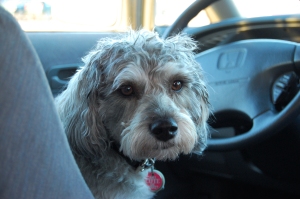

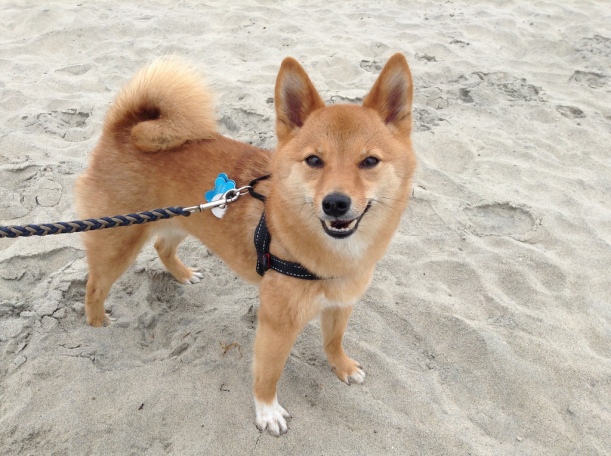
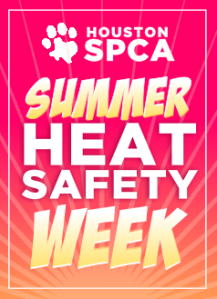
![NEW: Cat Language!A big thank you to the Training and Behavior Dept of Oregon Humane Society for their help with cat body language information. I have been a cat-less dog person for many many years, so some of this stuff was new to me! For example, I didn’t know that cats also emoted with their WHISKERS (relaxed = fanned out and horizontal; anxious = pulled backwards) Pupils, ear positions, body weight, and tails are the other indicators of how a cat is feeling. *As with dog body language, we look at the whole body and context *. And yes, cats feel and express DISGUST. I didn’t make this up. :)I will be selling 11″ x 17″ and 11″ x 14″ Cat Language prints at CatConLA this weekend, along with other cat-related stuff! I hope to see you there! Booth #333.If you cannot attend CatConLA, a print-resolution version of Cat Language will soon be available as a FREE DOWNLOAD from my website at www.doggiedrawings.net/freeposters [Please feel free to share, download, print, distribute! As per the Creative Commons License terms on my website: please don’t crop, modify, or use these images commercially.]Donations are always welcome and appreciated. :)- Lili x](https://i0.wp.com/41.media.tumblr.com/85d0a9a4d42e0517bf4485c504ddca50/tumblr_npa27rya8X1qzo1jbo1_1280.jpg)
